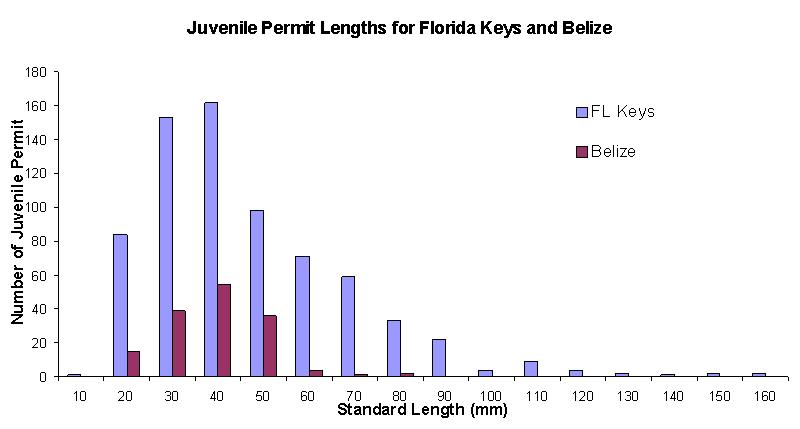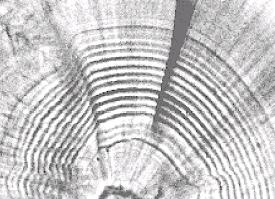
The life history of many marine fishes is a two-phase cycle: juveniles and adults make up a demersal phase, whereas larvae are planktonic. Determining ontogenetic patterns of habitat use of the demersal phase has important management and habitat conservation implications for species that use coastal habitats as juveniles. Juvenile permit, Trachinotus falcatus, are presumed to be limited to beaches exposed to open ocean, but few studies have addressed juvenile permit use of estuarine habitats. Ten years of fisheries-independent monitoring data from a subtropical estuary were analyzed to determine habitat use patterns and seasonality of juvenile permit. Shallow (<2 m) habitats in Charlotte Harbor, Florida, were sampled with 21.3 m and 183 m seines from 1991 through 2000. Juvenile permit were most abundant along sandy beaches in the lower estuary, and were in densities similar to or higher than along exposed coastal beaches reported in other studies. Size of captured permit ranged from 15 to 361 mm standard length. Small juveniles (<100 mm) were present almost exclusively from June to December. Both small and large (>100 mm) juveniles were most abundant over shallow bottom adjacent to unvegetated beach shorelines. These findings indicate that post-settlement permit recruit seasonally to specific estuarine habitats, then shift to other habitat types as they grow, before migrating out of the estuary. Since identification of the suite of juvenile habitats is prerequisite to determining the nursery value of these habitats, and many estuarine habitats are under anthropogenic stresses, research on the relative importance of estuarine habitats to juvenile permit is warranted.
*Artice in Press in Gulf and Caribbean ResearchWe know few specifics about the permit life cycle, but we do know that, like most marine gamefish, it is complex. Adult permit likely spawn by ‘broadcast spawning’ over deep reefs. After the eggs hatch, small larvae float in the open water as plankton for an unknown period of time. The larvae then undergo a metamorphosis, changing into a miniature form of the adult and occupying benthic habitats that are different from habitats used by adults. The purpose of this research was to determine what habitat types are required by juvenile permit. We used seine nets and snorkeling surveys to sample five primary habitats at Turneffe Atoll, Belize: windward sandy beaches, leeward sandy beaches, windward mangroves, leeward mangroves and lagoon interior mangroves. In June of 2003, 132 samples (98 seines and 34 snorkel surveys) at 41 locations were completed. Two-hundred eighty one juvenile permit were captured, from 12mm to 78mm standard length. All juvenile permit (excluding one) were captured on medium-energy windward beaches (average of 4.8 juveniles per sample). Twenty juvenile permit were collected and their otoliths removed, and these otoliths are now being examined for daily growth rings to determine age.




